Simple to use but lacking automation, integrations, and other essential features, Google
Forms is designed to help businesspeople accomplish easy tasks like sending out short surveys.
It is not intended for complex ones, like registering hundreds of people for an event and processing their payments in a secure manner.
Because of this and other reasons that we’ll make clear in this article, if you’re still using Google Forms for event registration, it’s likely that your ticket sales and productivity are lower than what they could be if you were using a dedicated registration software.
- Disconnected Web Experience
- No Task Automation
- Limited Design Customization
- No Payment Processing
- No Integration With Marketing Tools
- No Attendee Check-in Support
- Conclusion
Disconnected Web Experience
Your registration process makes a certain promise to your registrants. If it’s seamless and pain-free, registrants will expect the same experience at the event.
If, on the other hand, it’s tedious and disorganized, they might assume the worst and just drop out of registration right then and there.
Google Forms, unfortunately, often foreshadows an unprofessional event and summons up images of long lines, misspelled name tags, and being placed in a double-booked seat.
One of the main reasons for this is that Google Forms leads to a disconnected web experience during registration.
At one point your registrants are on your event page. Next, they’re on Google Forms, a completely separate domain.
And then they’re on a whole other platform to submit their payment. They’re dealing with too many different websites and forms, losing motivation during each jump.
Maybe ten years ago this would’ve been acceptable. But now, event attendees have higher standards because they’ve become used to a seamless registration experience.
They’ve been spoiled by companies that use some sort of registration software, and they, therefore, expect to find the registration form embedded on a company’s event landing page:
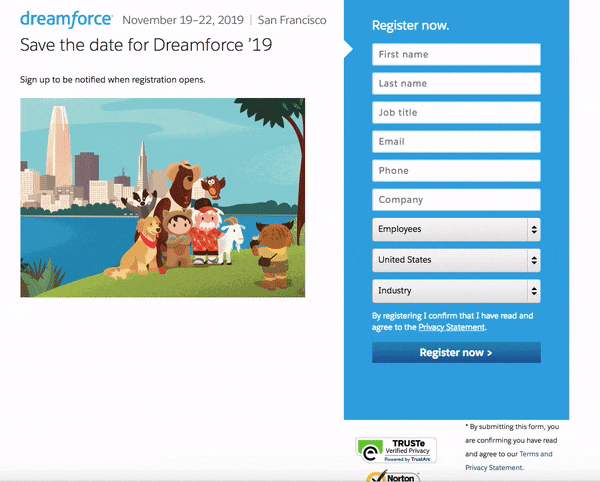
Source: Bizzabo
And registrants want to fill the form out and handle payment on your event website as well, without leaving, which to them seems like a risk to their data’s security.
In fact, 17% of consumers are reluctant to give their card details to websites they don’t trust. And one cause of falling trust is being redirected to another page to process payments.
To conclude, using Google Forms for event registration can make the registration process a bit of a hassle for your customers and set the wrong tone for the event.
No Task Automation
While Google Forms’ simplicity can make it seem like an appealing option for the time-crunched event organizer wary of having to learn a new tool, this factor is actually one of the tool’s greatest drawbacks.
By simplicity, we don’t mean ease of use, but more so lack of features, namely, task automation.
This feature can be found in most registration software platforms and saves the user hours a day.
Plus, since these software tools provide helpful resources and intuitive designs, it often only takes a few hours to learn how to use and set up their automations.
With Google Forms, on the other hand, you have to do most of the registration process manually.
You have to send out the Google Form to your potential attendees, and often, because of lack of integration, you have to transfer the information collected in the form to your other systems via data input, a mundane and error-prone process.
If you’re using registration software, like Regpack, much of this is automated. You simply create an online form using a drag-and-drop editor like the one below:
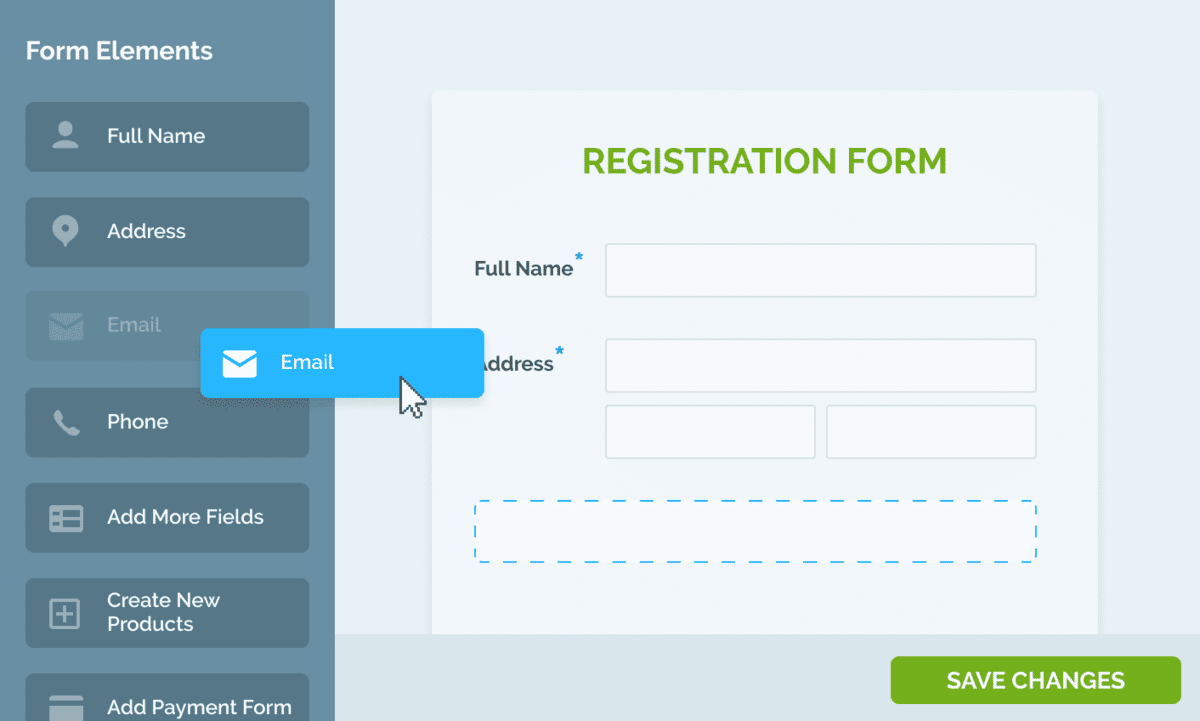
Source: Regpack
And then you can easily embed the form onto your website, where visitors can find it and fill it out on their own, while you sit back and watch the registrations roll in, or, better yet, handle more valuable work and intermittently check the platform’s real-time analytics to see the number of new registrations you have created.
Moreover, the payments are processed automatically as well. This is much faster and often safer than processing payments manually over the phone or through a third-party platform.
Furthermore, thanks to integration capabilities, the data collected will go right into the systems you’ve connected, be it your marketing tool or CRM.
And you can even create automated email sequences that trigger after registration and update attendees to get them excited about the event:
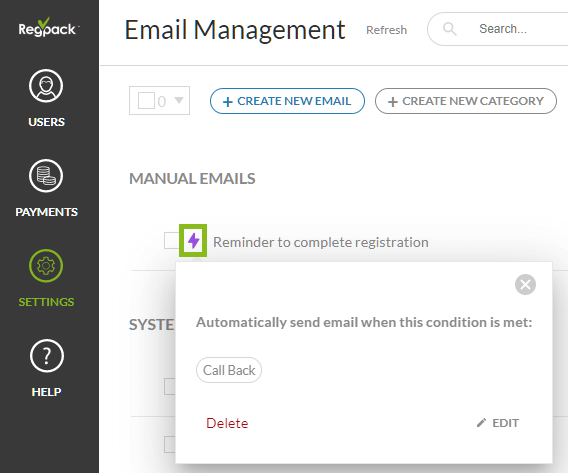
Source: Regpack
In short, the time you’ll save and the headaches you’ll avoid almost always justify the purchasing and learning of a new registration software tool, especially if you’ve seen these four signs you’ve outgrown Google Forms.
Limited Design Customization
Another reason not to use Google Forms is that the tool allows for very little form design customization.
Your online registration forms will therefore look pretty much the same as any other company’s form, as well as quite bland.
Although Google Forms does allow you to change the color and font and add an image at the top, the form will inevitably still look pretty unprofessional:
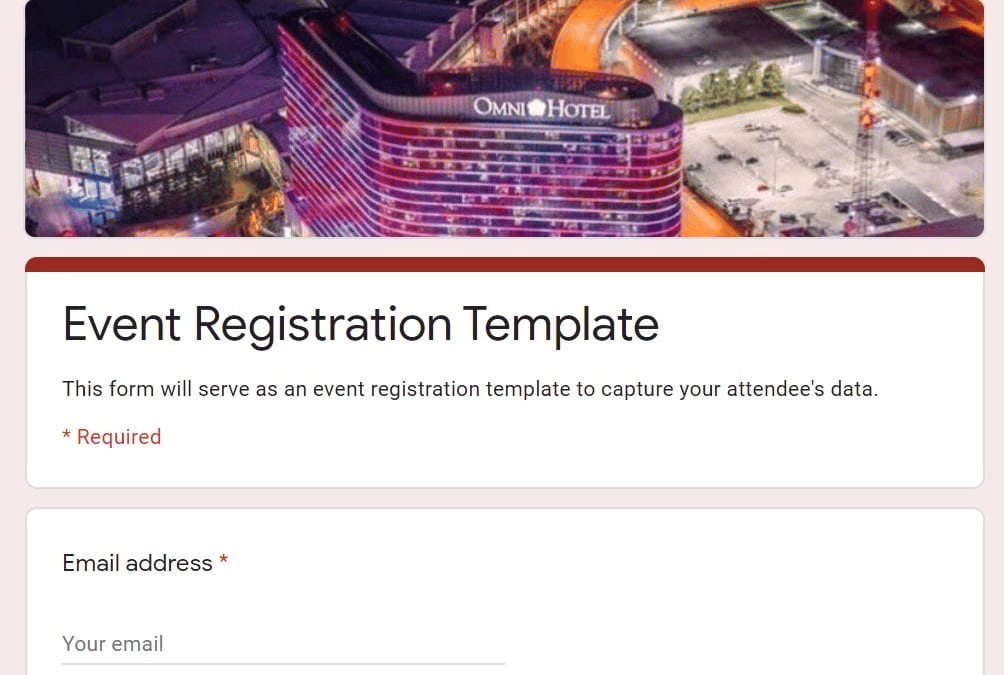
Source: JShy
This lack of design options may seem like an issue only for the aesthetes, but it’s most certainly not.
When marketers fail to differentiate their form design from other businesses, they miss out on a key chance to make their brand memorable to a registrant.
Not to mention, when your form doesn’t have a layout, custom graphics, and other features that reflect your brand, you come across as a bit of an amateur, a perception that can hurt your brand in the long run, not to mention the event’s turnout.
With registration software, you can easily create customized online registration forms that include your brand’s color scheme, font, and more, enabling you to increase brand awareness and provide a consistent and professional experience for your customers.
Even something as simple as including your logo at the top of the form can improve its power to impress:
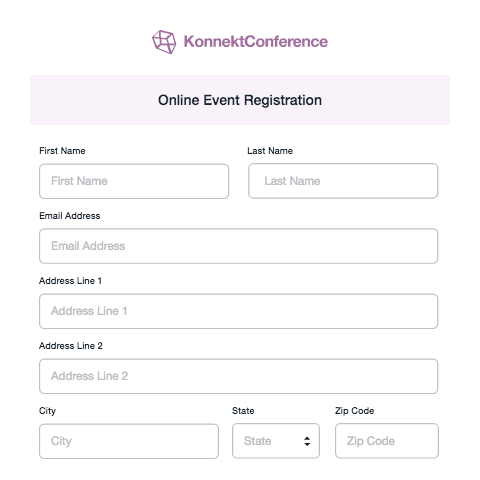
Source: formstack
Best of all, most registration software platforms also give you form templates to use as foundations or inspiration for your own online forms.
They also typically offer an intuitive online form builder that will empower even the most technically challenged member of your team to create a memorable, branded registration form.
So, when you ditch Google Forms for registration, not only can you create more impressive online registration forms that lead to higher conversion rates, but you can also create them incredibly quickly.
No Payment Processing
Unlike most registration software, Google Forms does not allow for payment processing, thus prolonging the event registration process by another step.
This is undesirable to both the busy organizer and the often impatient registrant.
Event organizers who use Google Forms have to choose from a list of less than ideal ways to securely collect their registrants’ payments.
One common option is to call or email a registrant once they’ve submitted the form and to ask them for their payment information that you’ll then have to plug into a separate payments platform to facilitate the transaction.
Another is to link out to a third-party payment platform like PayPal in your confirmation message and ask for a certain amount.
These methods, of course, both have significant drawbacks if you’re processing numerous payments for an event.
For one, many attendees might be uncomfortable giving their card information, especially if they’re used to doing it through secured online forms on websites that are PCI compliant, which Google Forms is not.
Customers dislike being redirected to another page to make their payment. It makes them feel like they’re no longer dealing with your company, and concerns about the security of their payment information start to creep into their minds.
Furthermore, these methods are time-consuming for the organizer.
There are more steps involved, and because the registration and payment data don’t automatically go into a centralized database for the event, as they would in a registration platform, it’s difficult to figure out which registrants have registered but not yet paid.
On a final note, you also lack the ability to easily create personalized payment plans, a feature offered by many registration software tools:
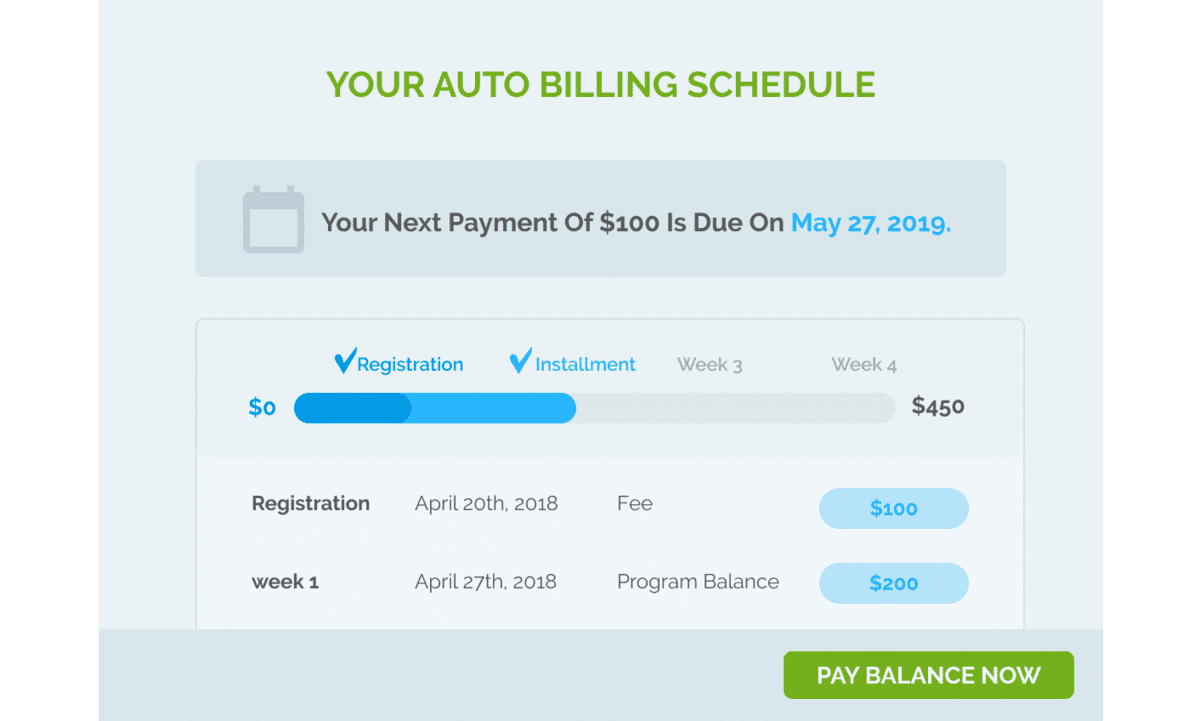
You can’t easily, for example, allow attendees to pay in installments for an expensive event. This means you may miss out on attendees who want to come but can’t pay in full upfront.
No Integration With Marketing Tools
Using Google Forms hinders your event marketing because the tool does not integrate with marketing tools.
To reach your marketing KPIs, you end up having to do a lot more work than you would if you had marketing integrations.
For example, Google Forms doesn’t allow you to send emails or messages to registrants directly from the platform, as you would be able to with an event registration software.
Instead, you have to use your own inbox or sign up for a third-party email provider.
Furthermore, Google Forms doesn’t integrate with social media platforms, which are essential these days for promoting your event.
This forces you to manage your social media activities separately.
You also won’t be able to include social media share buttons throughout the registration process if you’re using Google Forms.
Meanwhile, registration software platforms enable you to include these share buttons on the thank-you page following form submission, making it easy for registrants to post about the event to their favorite platform and tell friends to come.
For example, look how simple this form makes it for registrants to share the event on Facebook and Twitter:
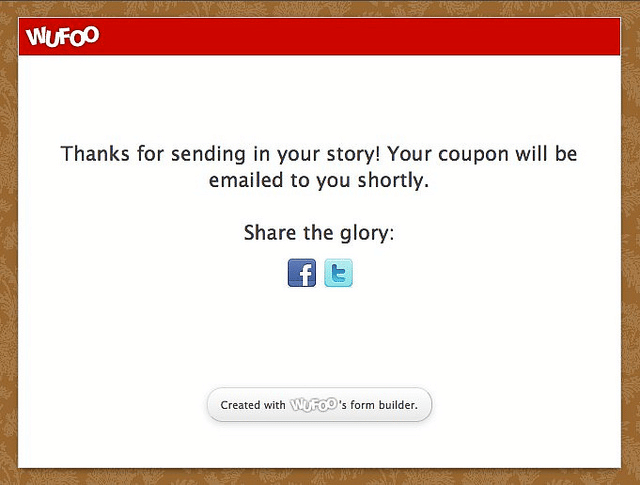
Source: Wufoo
Lastly, without seamless integrations between your event technologies, you’ll likely find yourself with multiple windows open on your computer, jumping from one to the other.
Aside from wasting time, this way of working can leave your brain feeling as if it’s been scrambled by an especially energetic five-star chef.
No Attendee Check-in Support
Another drawback of using Google Forms for event registration is the inability to easily and quickly check in attendees on the day of the event.
You’re forced to do it manually, a slow process that can cause a long line of people waiting to enter the premises, hence creating a negative impression of the event before it even starts and causing frustration amongst your attendees.
Event management software, on the other hand, often comes with features that give you the ability to check in guests using multiple methods, and all of them are efficient.
One popular way is scanning each attendee’s custom QR code with a dedicated mobile app:
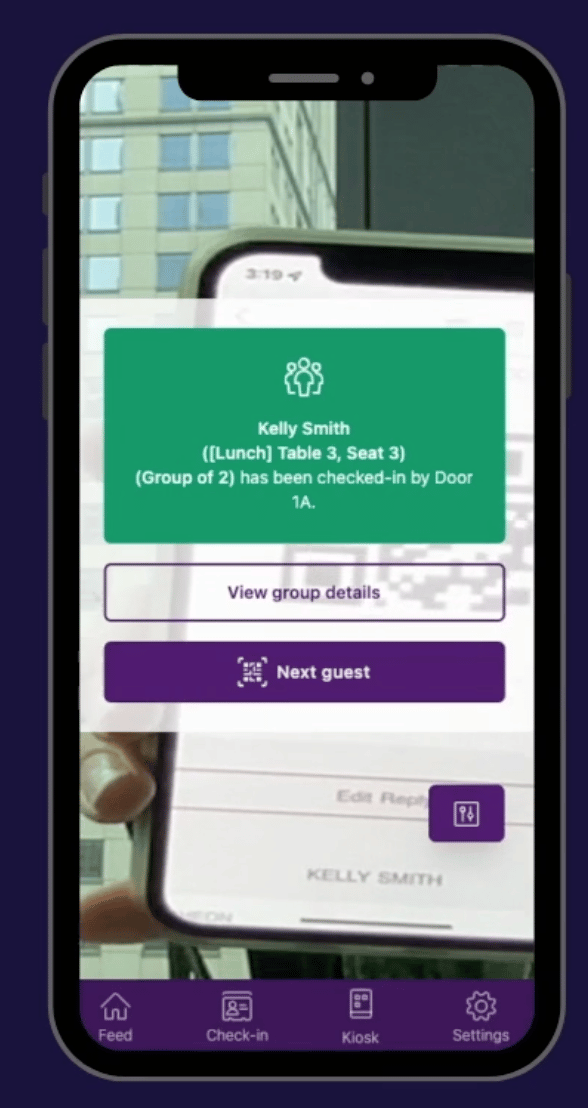
Source: rsvpify
Another method facilitated by event software is to check in attendees simply by asking for their name and then typing it into the software platform on whatever device you’re using, whether that’s a desktop, mobile phone, or tabloid, as depicted below:
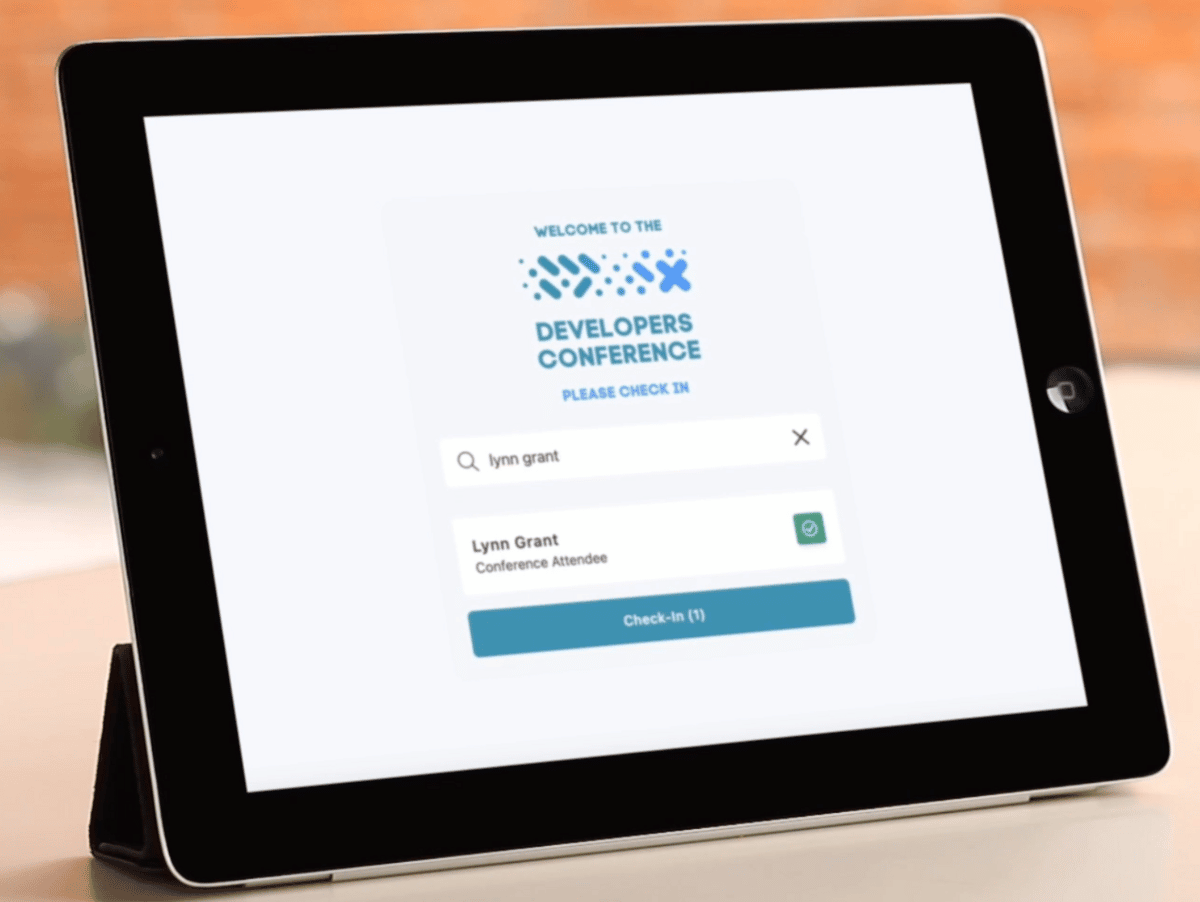
Source: rsvpify
Also, because the check-in system is integrated with or part of the registration software, whenever you check in a guest their status is automatically updated in the database to “attended” or some similar word denoting that they showed up.
And this data is vital for your post-event reporting. It allows you to figure out things like the percentage of registrants who actually attended, which can throw light on the effectiveness of your registration process or pre-event email sequences to registrants.
Really though, the main advantages of using event software with check-in features over Google Forms are twofold.
On the one hand, your attendees will experience shorter lines, if any at all, and on the other, your staff, freed from manual check-in duties, will be able to focus their efforts on being friendly with the guests to create a warm first impression or on handling other higher-value tasks
Conclusion
Not designed for event registration, Google Forms causes multiple inefficiencies that can hurt your form conversion rate and event attendance number.
To rid themselves of these issues, many event businesses switch to dedicated event registration software with payment processing, automation functionality, and other useful features.
If you’re still wondering if Google Forms is okay to use, check out our guide on the differences between Google Forms and registration software, where we compare the two and help you decide which is best for your business’s needs.


















